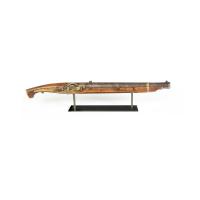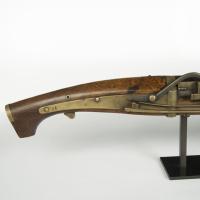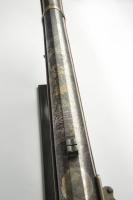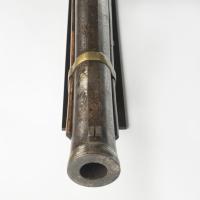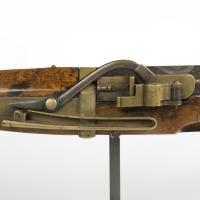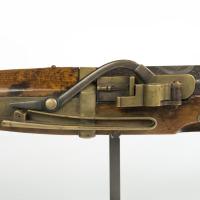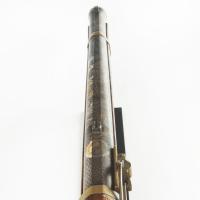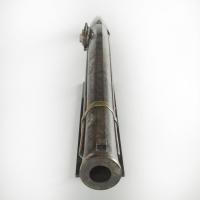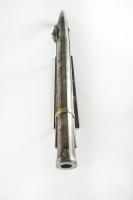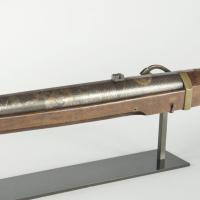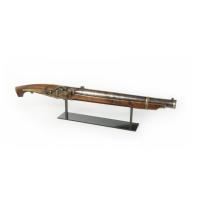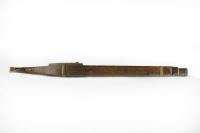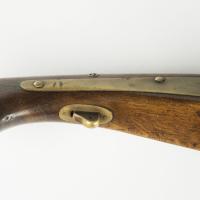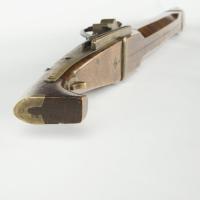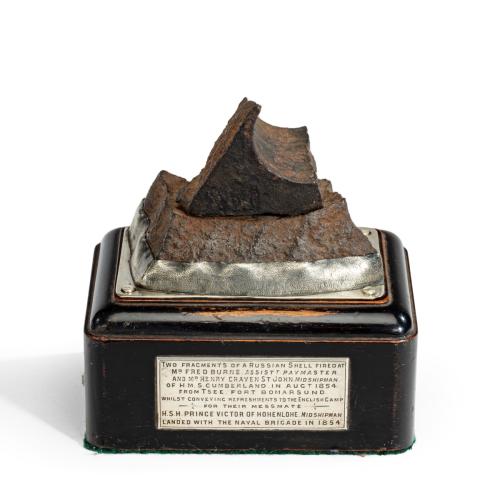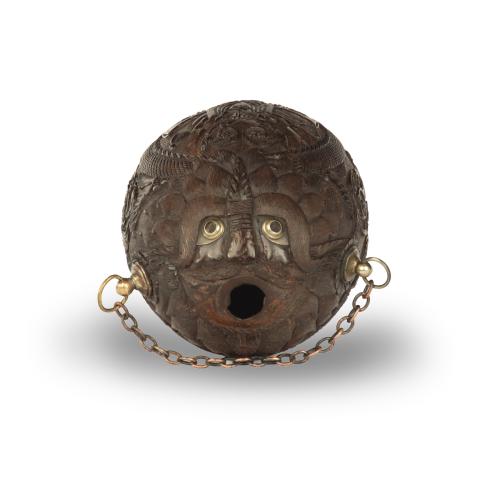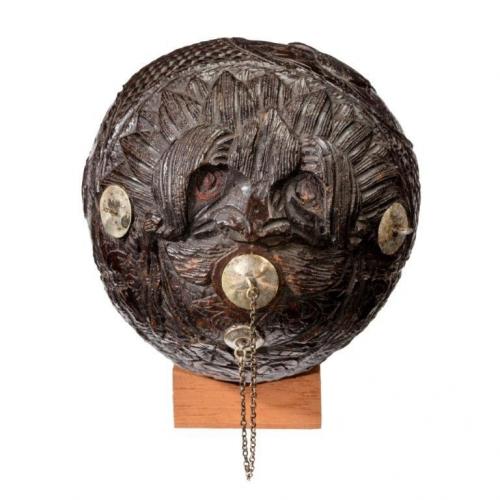
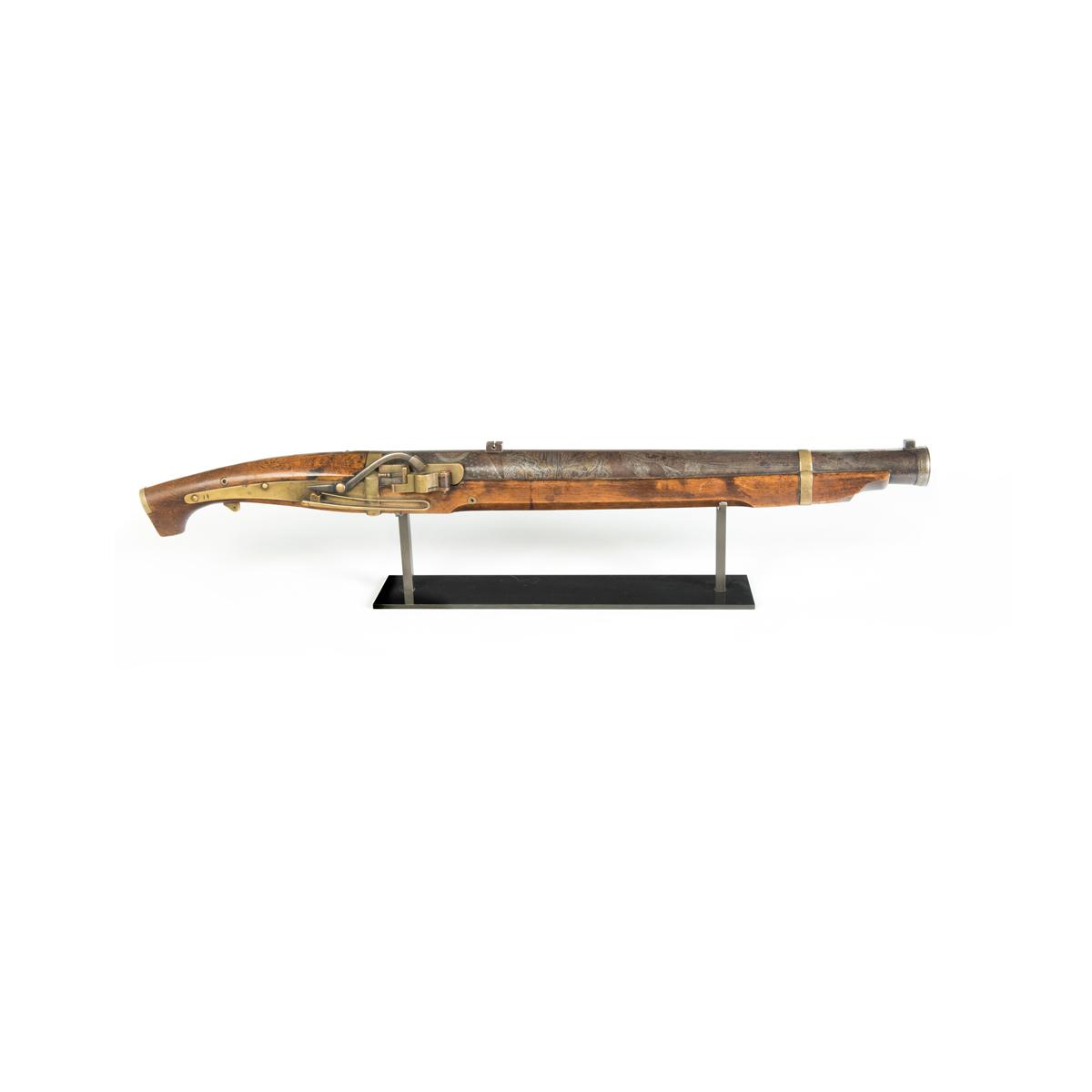
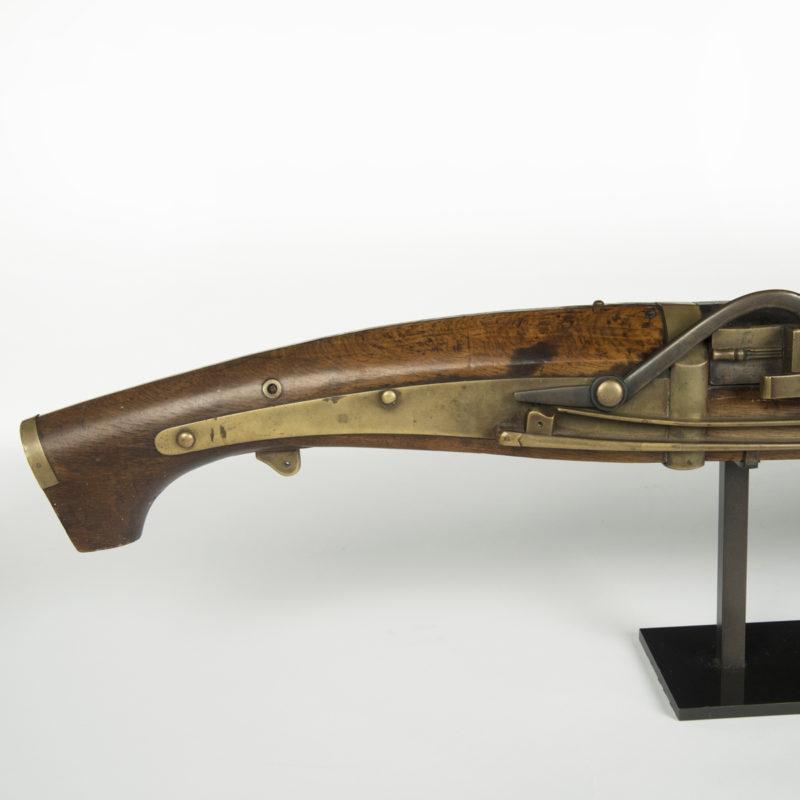
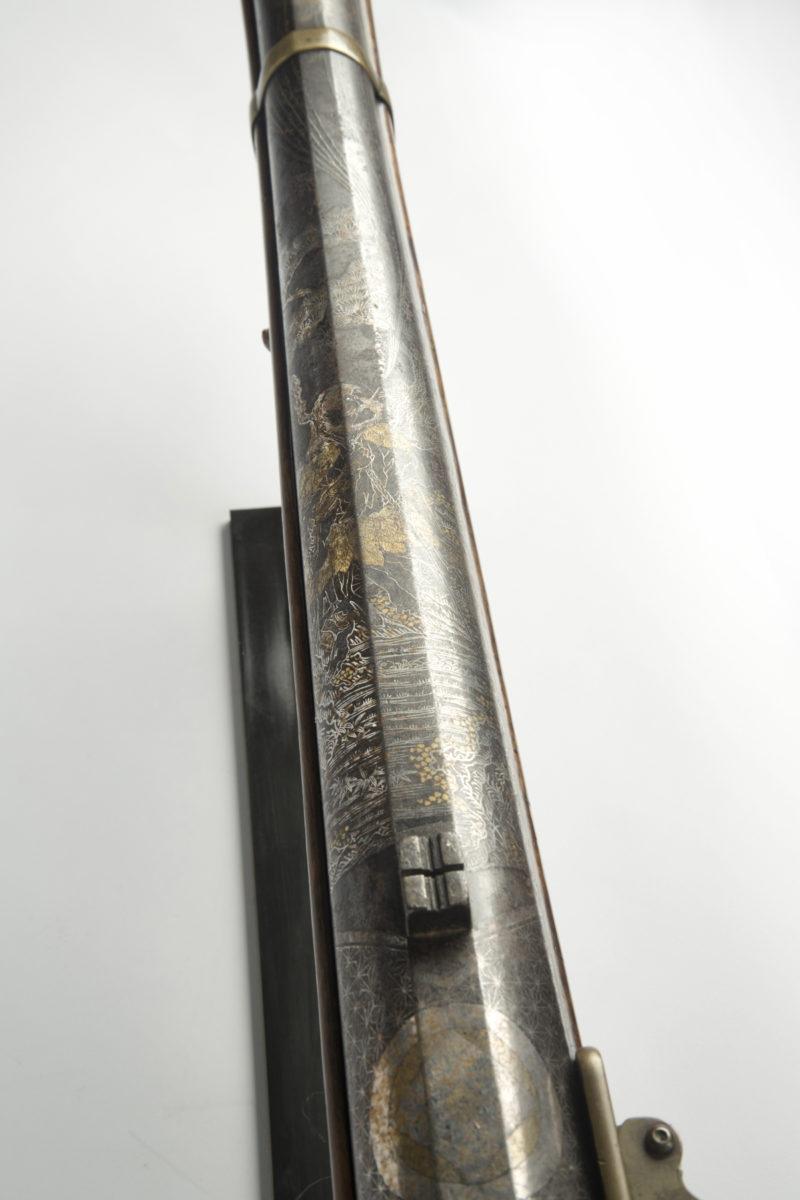
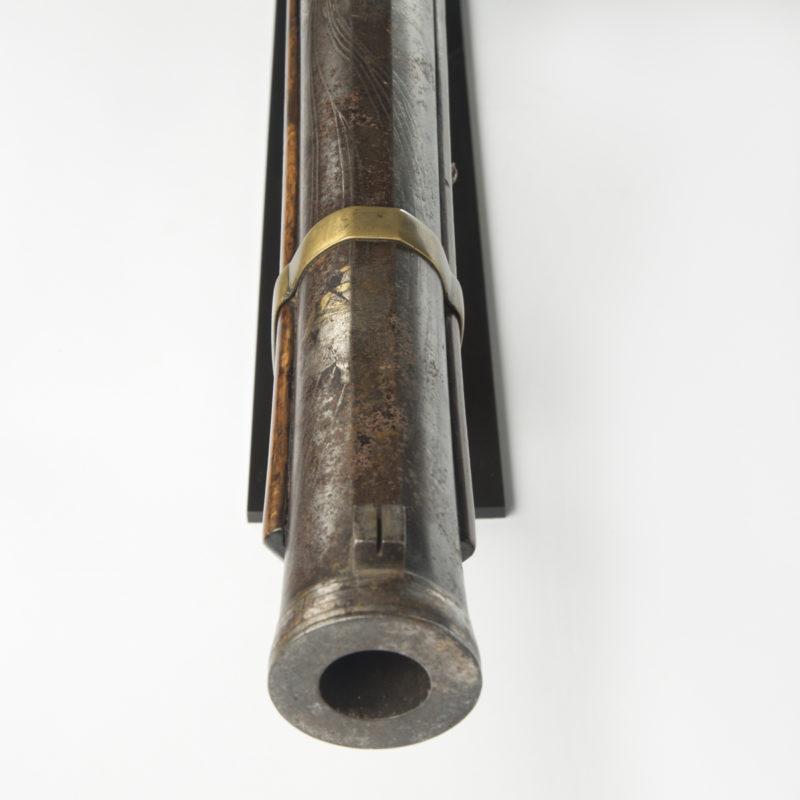
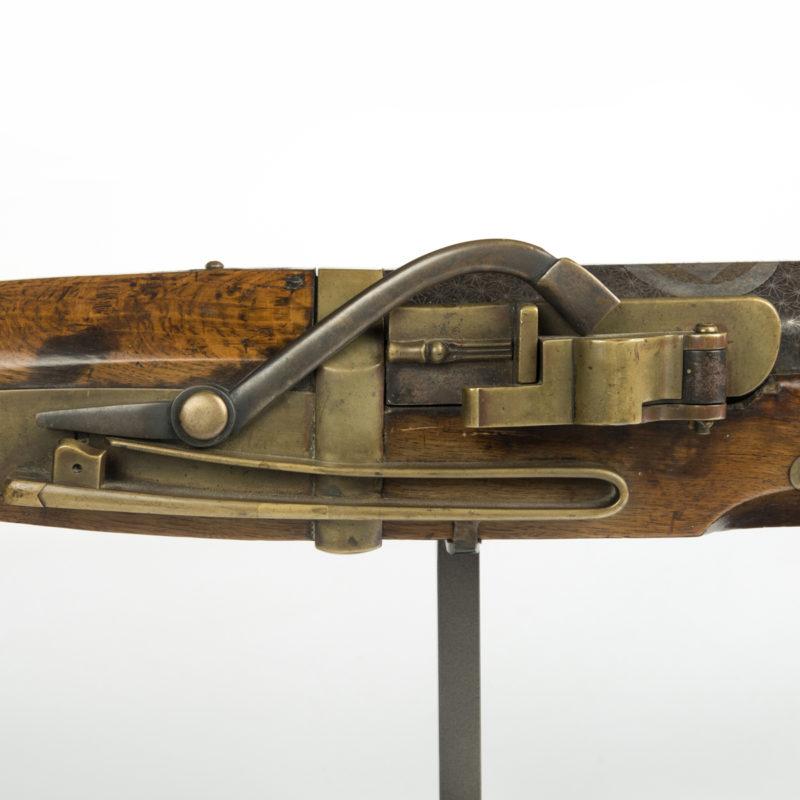
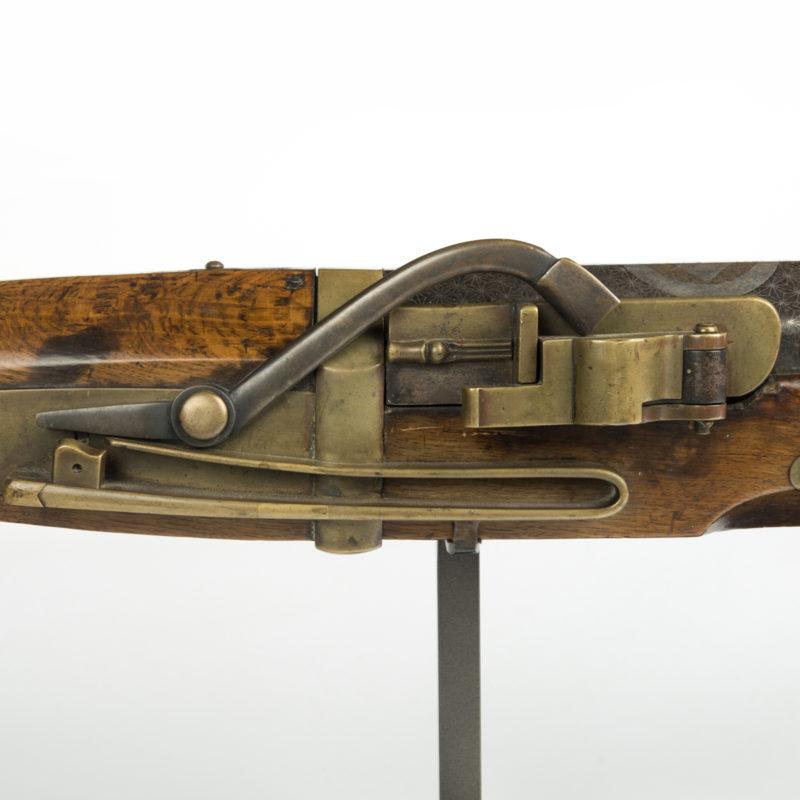
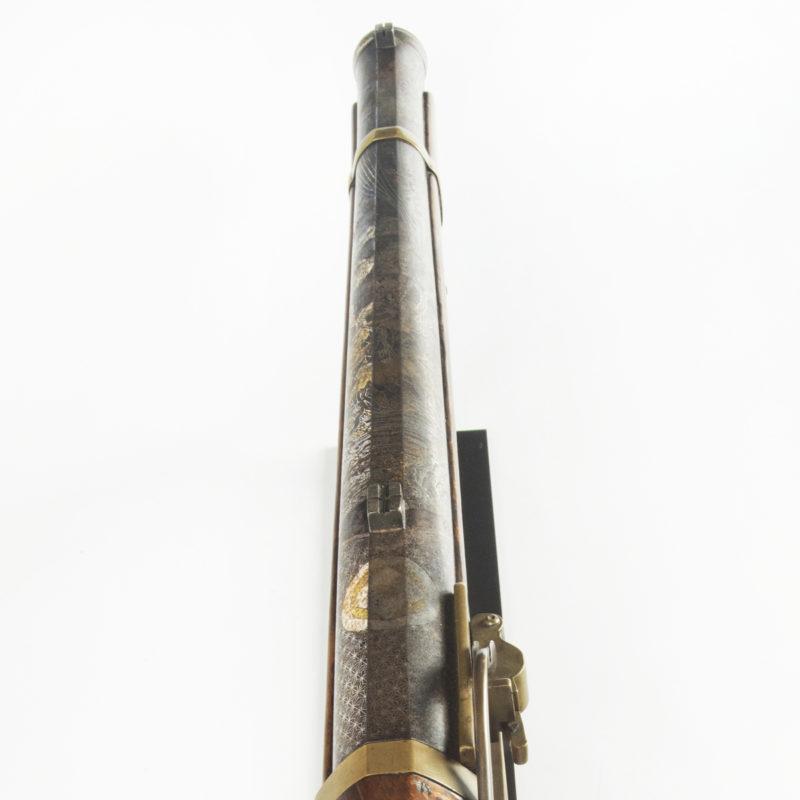
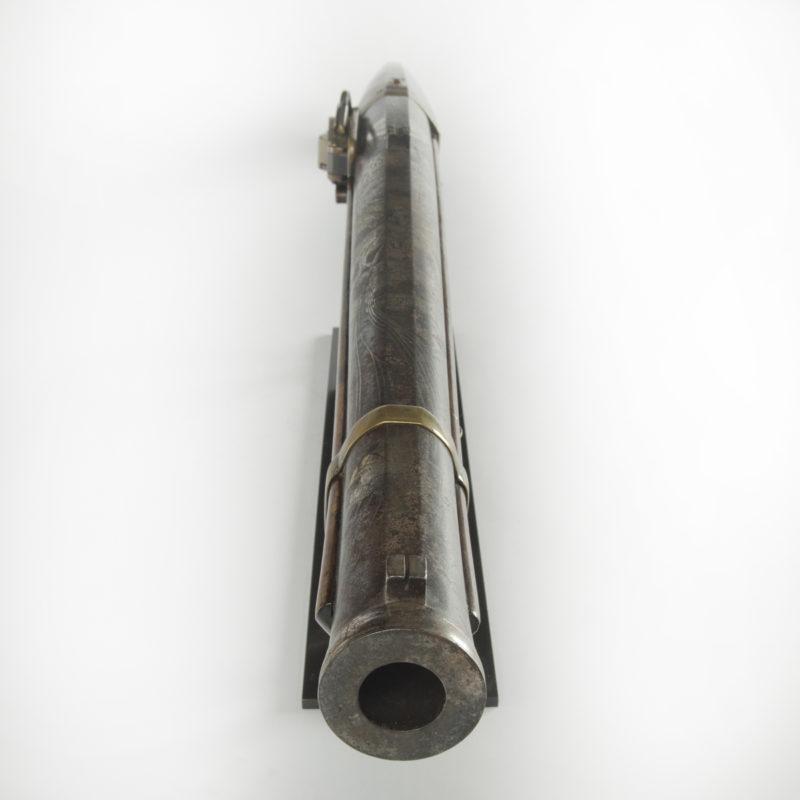
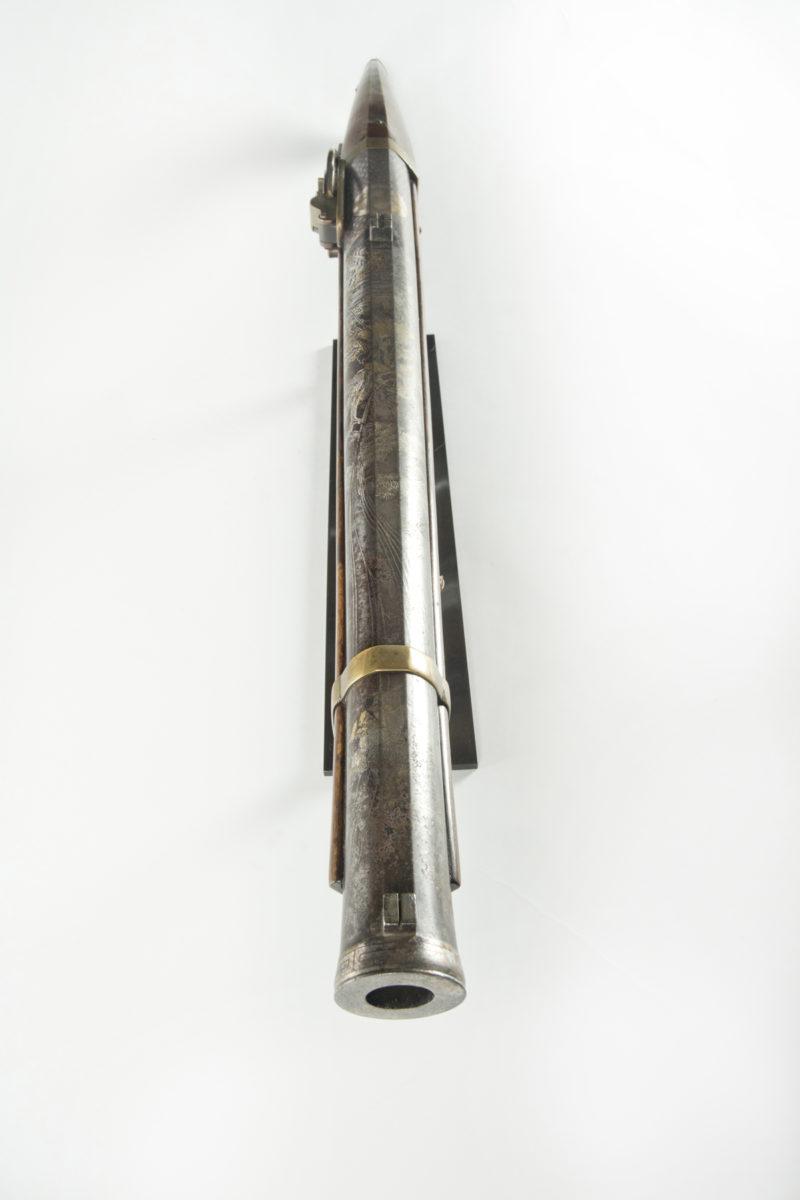
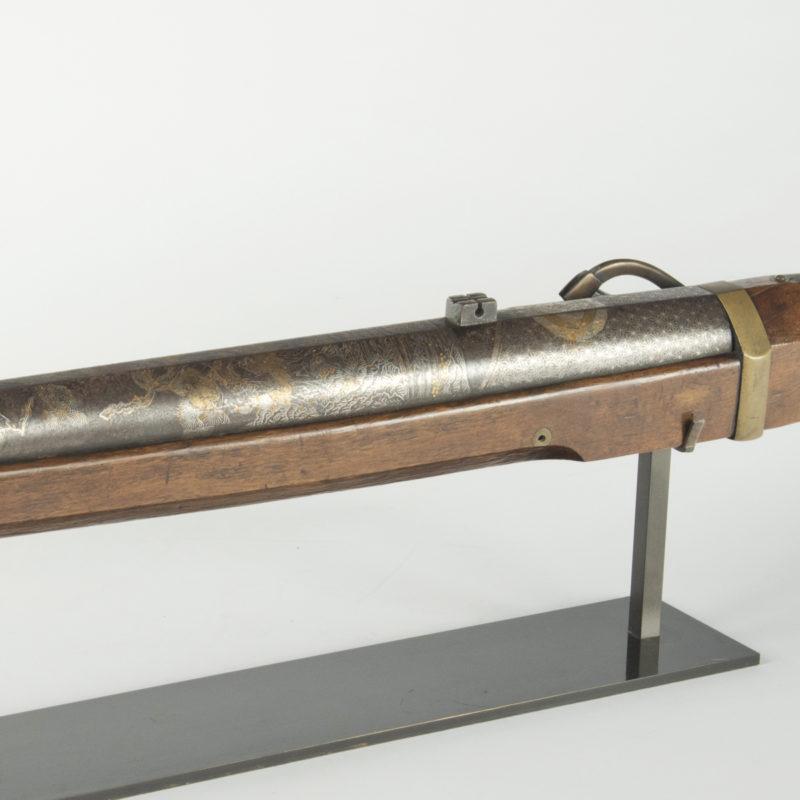
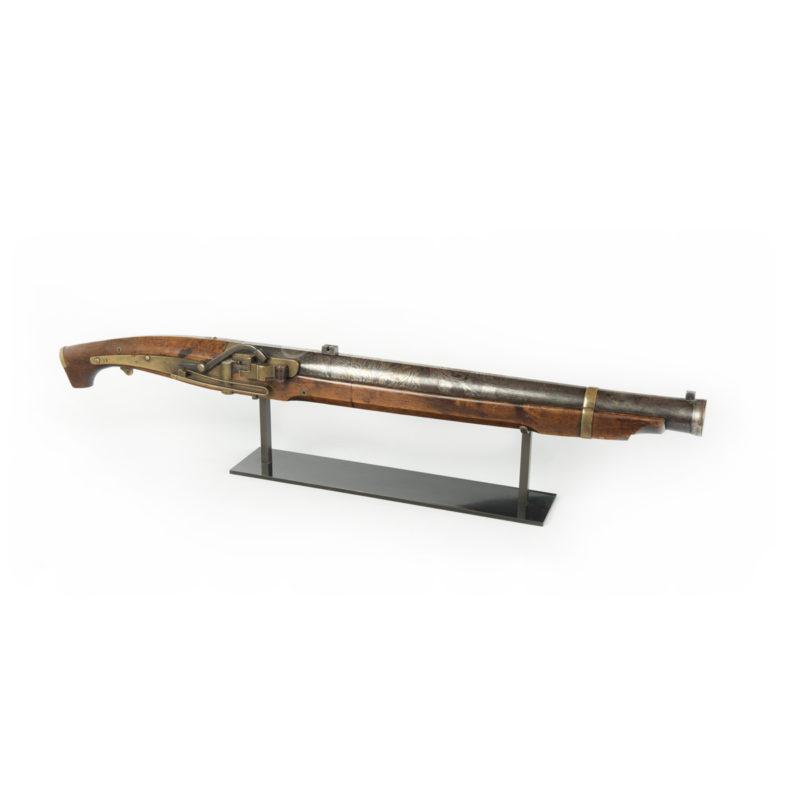
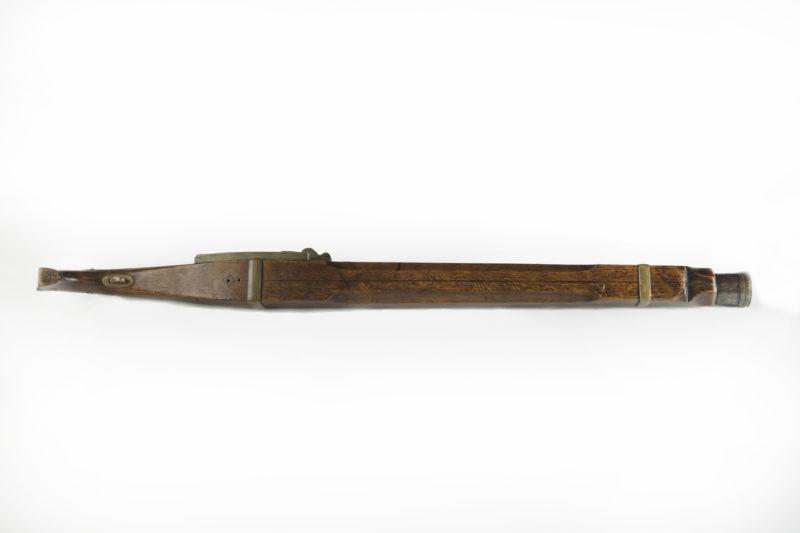
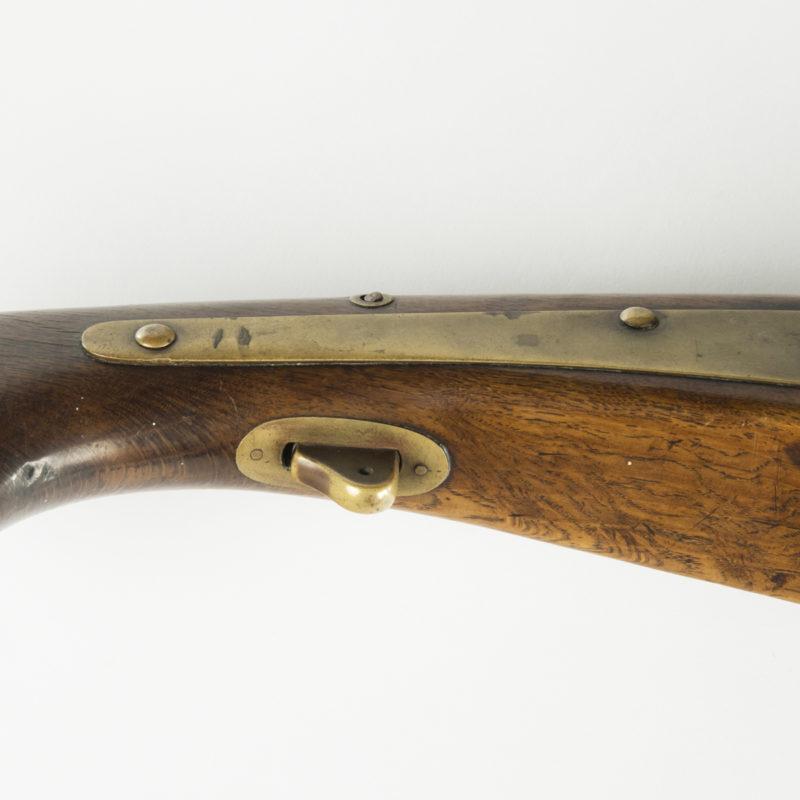
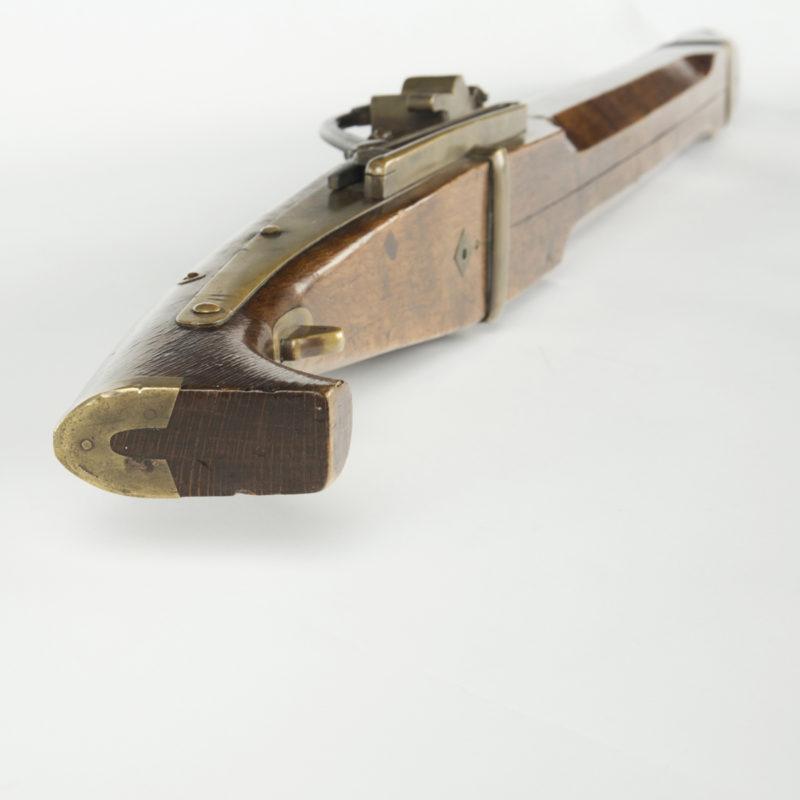
This object is eligible for a Certificate of BADA Provenance
The BADA Standard
- Since 1918, BADA has been the leading association for the antiques and fine art trade
- Members are elected for their knowledge, integrity and quality of stock
- Our clients are protected by BADA’s code of conduct
- Our dealers’ membership is reviewed and renewed annually
- Bada.org is a non-profit site: clients deal directly with members and they pay no hidden fees
A massive Japanese hand cannon ‘Ozutsu Teppo’ of the Tazuke-Ryu School.
This Edo period 26mm bore or 30 ‘Monme’ matchlock carbine is intricately inlaid with gold and silver wires showing the Immortal Tekkai Senin blowing his soul out of his body in order to meet his master on Mount Hu. The lower section has the mon (crest) of the ‘Maru Ni Kuginuki’ clan and the signature ‘Tomioka Sahaiji Yoshihisa’. The stock is carved out of Japanese oak. Edo Period 1615-1868, circa 1840.
Length: 40¾ in (103.5cm) Weight approx. 26 lb (11.8kg)
Literature: see C Sinclaire, Samurai, The weapons and spirit of the Japanese warrior, pp130-131, and I Bottomley & A P Hopson, Arms & Armour of the Samurai, pp.124-125, for other examples of Japanese inlaid hand cannon as well as the National Gallery of Victoria, Melbourne, access. no.2892-D3.
Resembling the Portuguese arquebus, which was the first matchlock gun to be seen in Japan, tradition relates that after the accidental arrival of three Portuguese mariners on Tanegashima Island in 1543, the swordsmith Kiyosada gave his daughter to their captain, in order to learn the secrets of musket manufacture.
Large carbines such as this example, were known as ‘ozutsu’ or cannon and were mounted on castle walls, used on merchant ships to repel pirates, on horseback in war or as assault weapons to blast through door hinges. Ammunition consisted of heavy round lead balls with differing sizes described as ‘Monme’. Made to take 30 ‘Monme’ shots, this carbine is one of the largest examples of Japanese Edo Period handheld firearms but was most probably made as an exhibition piece.
Yoshihisa was a gunsmith from the Musashi Province, an area stretching today from Tokyo to the Prefectures of Saitama and Kanagawa. He is recorded working circa Tenpo 14 (1843) and was an official supplier to the Shogun. By the end of the 19th century these massive guns were still used, but only to call the Buddhist monks to prayer, to signal the end of the working day or to begin official festivals.
Dimensions
Length: 40¾ inches (103.5cm) Weight approx. 26 lb (11.8kg)The BADA Standard
- Since 1918, BADA has been the leading association for the antiques and fine art trade
- Members are elected for their knowledge, integrity and quality of stock
- Our clients are protected by BADA’s code of conduct
- Our dealers’ membership is reviewed and renewed annually
- Bada.org is a non-profit site: clients deal directly with members and they pay no hidden fees


